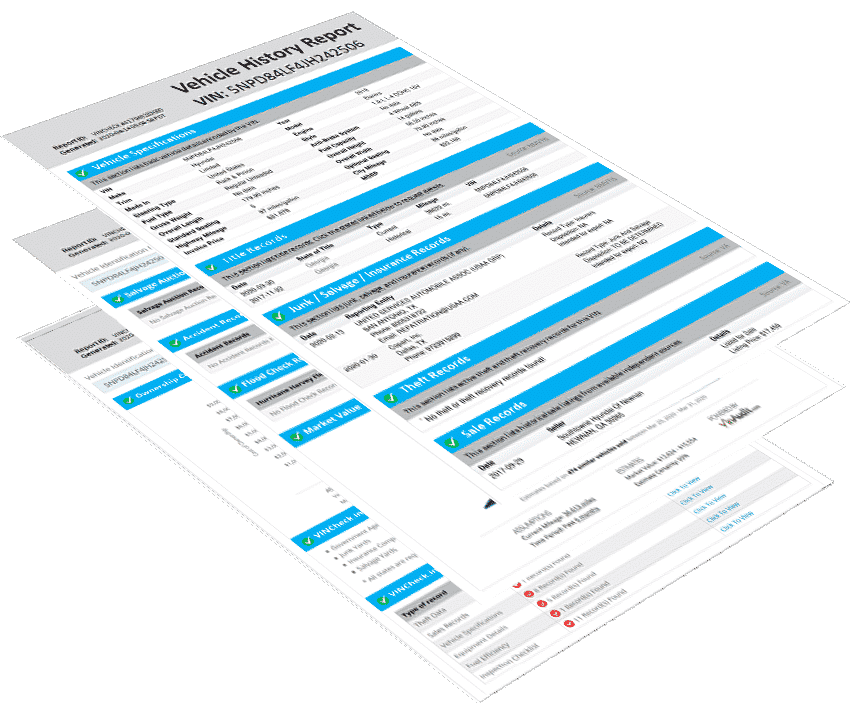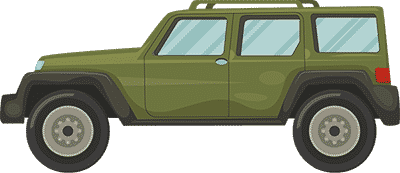Complete Vehicle information Lookup VIN Number.
Know more about your vehicle or about the car you want to buy
Search by VIN
1 in every 5 cars is a SALVAGED car
1 in every 15 cars is REBUILT
1 in every 25 cars has been involved in an ACCIDENT
1 in every 50 cars has a TAMPERED ODOMETER
1 in every 100 cars has been DAMAGED BY FLOOD


Easy VIN Number Lookup
Monitor the market value of your vehicle and stay up-to-date on records of safety recalls. Help discover when it’s the right time to sell your car. Get full car information in minutes.
Accidents & Salvage Records
Vehicle Specifications
Ownership Cost
Sale Listings
Market Value
Theft Records

How to find your car’s VIN number?
Look for your car’s VIN at the front of the dashboard, on the driver’s side of the vehicle. It’s easiest to see your VIN from outside the car, looking in through the windshield, at the area where the hood ends and the windshield begins.
Or, look for the VIN on the post of the driver’s side door. You’ll see this when you open the door and look around the area where the door latches to the car.
If you can’t find the VIN on the car, it should be printed on your insurance cards and your vehicle’s title.
What is a VIN number?
A Vehicle Identification Number or VIN is a 17-digit code of letters and numbers that identifies a car uniquely and is assigned at the time a vehicle is manufactured. Each section of the code provides a specific piece of information about the vehicle, including year, make, model, engine size, and the country and factory where the car was made. The VIN also carries security features for owners and manufacturers. Learn more about the meaning of each digit in a VIN number.
If your vehicle was made before 1981, the VIN may be shorter than 17 characters. This decoder works best with VIN lookups on vehicles made after 1981.
Why does a VIN matter?
VIN numbers provide important and specific information about your car. On Vinlookup.digital, it will make sure we identify the correct vehicle on the site before providing part match recommendations. Service shops use the VIN to learn about the vehicle’s history, quickly identifying service and accident history records. Manufacturers use the VIN to find vehicles when they issue recalls, and law enforcement can use it to help recover stolen vehicles.
Faq
The VIN is the car’s fingerprint, a unique vehicle identifier composed of 17 characters (digits and capital letters). Each section of the VIN stands for the car’s unique features, specifications and make and model, and other information.
You can find the VIN outside the vehicle by looking at the dashboard on the driver’s side or on a sticker on the door jamb of the driver’s door. The VIN is also written on the title, vehicle registration, and insurance documents.
Make sure that you copied all the 17 number-and-letter combinations of the VIN correctly. Check if it includes the letters O (o), I (i), and Q (q). The standard format does not include these letters to avoid confusion with numerals 0, 1, and 9).
A vehicle history report is basically for buyers as well as sellers of used cars. As a car owner, you may want to have a vehicle history report you can present to a buyer if you want to sell your car. If you want to buy a used car, you’d want to run a VIN check to make sure it did not have any major issues in the past.
The VinCheck.info free vehicle history report is a comprehensive 10-page report that offers critical details on a used car collated from industry and government sources. Basically, it presents a used car’s past and current condition: vehicle specifications, equipment details, and the NMVTIS Report. It also includes value-added features such as market value, fuel efficiency, safety rating, inspection checklist, recalls and defects, and auto insurance information.
Don’t make things hard. Check the history of any used car.